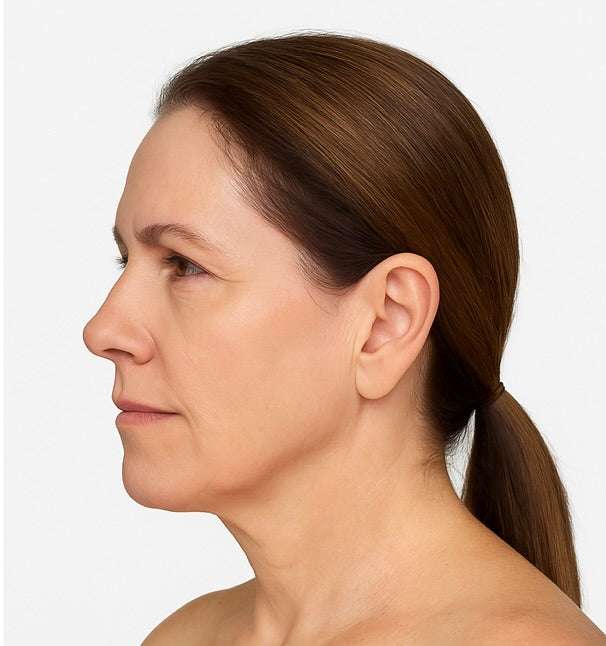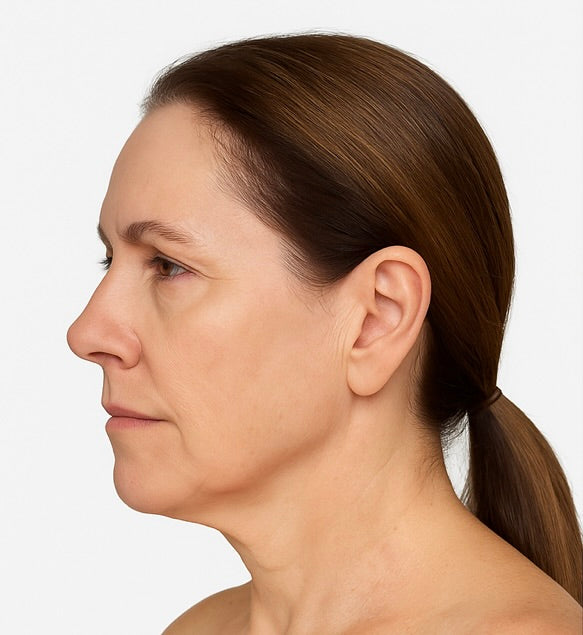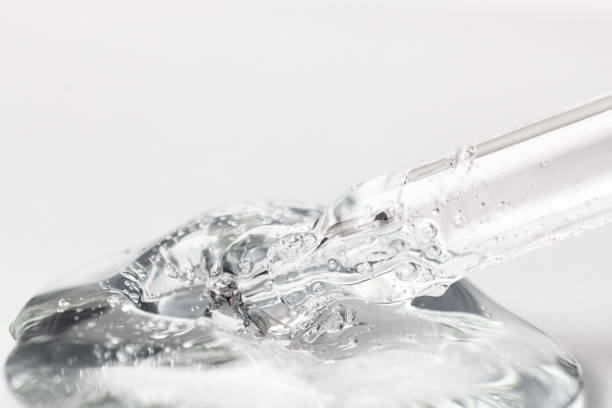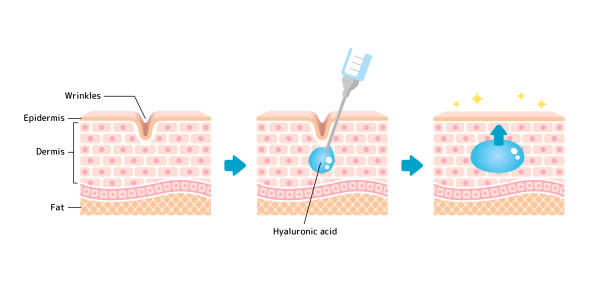
Temple Dermal Filler
Temple dermal filler restores volume loss in the upper face, creating a smoother, more youthful contour around the eyes and brows. It supports the outer face, enhancing balance and lifting effects subtly. Ideal for hollowing due to ageing or weight loss. Results are natural and long-lasting with minimal downtime.
Share
Temple Filler
What Is the Procedure For?
Temple filler is a targeted treatment to restore volume loss in the temporal hollows—the sunken area between the outer eyebrow and hairline. Ageing in this region can create a gaunt appearance and affect facial balance. Replenishing this volume improves upper face contour and subtly lifts surrounding structures including the eyebrows and mid-face.
This Treatment is Ideal for Those Who:
-
Notice hollowing or shadowing in the temples
-
Have lost definition and support in the upper third of the face
-
Want to lift and frame the eyebrows for a youthful, refreshed look
-
Experience overall volume loss due to ageing, weight loss, or genetics


 Before
Before

How Does the Treatment Work?
Hyaluronic acid-based dermal filler is injected into the deep temporal fossa, typically overlying the temporal bone or within the superficial fat pad, to gently rebuild volume. This reduces hollowness, supports adjacent facial structures, and improves skin texture. As the filler integrates, it also stimulates collagen for longer-term structural improvements.
Injection Points for the Filler Treatment:
- 1–2 injection points per side, depending on anatomy
- Placement in the deep temporal fossa (supraperiosteal layer) using a needle or cannula
- Optional layering in superficial fat pad if further refinement is required


Cannula vs. Needle Technique:
- Cannula: Preferred due to low vascular risk in this area, especially near the superficial temporal artery. Allows broader filler placement with reduced trauma.
- Needle: May be used for precision bolus placement directly on bone; more control but slightly higher risk of bruising.
Understanding Cross-Linking in Filler Products:
- High cross-linked fillers like Juvederm Voluma offer optimal lift and structure in the temples, lasting 12–18 months.
- Moderately cross-linked fillers such as Teoxane RHA 4 may be used for patients requiring less density or desiring a more natural, softer result.
- Cross-linking ensures product longevity but may increase firmness; ideal for deeper injections where smooth blending is critical.
What to expect from your procedure:
-

Treatment Duration:
30–40 minutes
-

Pain Level:
Mild; numbing is usually not required due to minimal sensitivity in the area
-

Downtime:
Minimal; potential for mild swelling or tenderness for 1–3 days
-

Results Seen:
Immediately, with continued improvement over 1–2 weeks
-

Longevity:
12–18 months depending on filler used and patient metabolism
This Treatment is Ideal for Individuals Who:
- Seek facial contouring and a more harmonious profile
- Desire subtle lifting of the lateral brow and midface
- Wish to address signs of ageing or facial deflation in a natural, balanced way
Filler Product Options and Pricing:
- We offer premium HA fillers based on your anatomy and treatment goals:
Additional Syringe Pricing:
- Teoxane: £80 per additional ml
- Juvederm Vycross Range: £125 per additional ml
A full consultation will determine the required volume and product to safely and effectively achieve your goals. Volume requirements for temples can range from 1–3ml per side depending on the degree of hollowing and facial structure.
Book your consultation today and experience the confidence-boosting benefits of anti-wrinkle injections at Haus of Ästhetik.
Frequently Asked Questions
What are dermal fillers made of?
Most dermal fillers used at Haus of Ästhetik are made of hyaluronic acid (HA), a naturally occurring substance in the body that helps retain moisture and add volume to the skin.
What areas can dermal fillers treat?
Fillers are used to treat a range of areas including lips, cheeks, chin, jawline, temples, nasolabial folds, marionette lines, tear troughs, hands, and even non-surgical rhinoplasty.
How do I prepare for a dermal filler appointment?
Avoid alcohol, aspirin, and NSAIDs (e.g., ibuprofen) for 24–48 hours before treatment to reduce the risk of bruising. Stay hydrated, and come with a clean face free of makeup.
Is local anaesthetic used during the treatment?
Yes. All our dermal fillers contain lidocaine for comfort. In addition, we apply a prescription-grade topical anaesthetic (10% lidocaine), which is significantly stronger than over-the-counter LMX or EMLA creams.
What is the benefit of using 10% lidocaine topical anaesthetic?
Our high-strength lidocaine offers faster onset and deeper numbing, ensuring a more comfortable experience for our patients.
Is the procedure painful?
Discomfort is minimal. The combination of topical anaesthetic and lidocaine in the filler significantly reduces pain. Cannula techniques also help minimise trauma.
How long do dermal filler results last?
Longevity depends on the treatment area and filler used, but results typically last between 6–18 months.
How long does the treatment take?
Most procedures take 30–45 minutes, including consultation and aftercare advice.
Are results visible immediately?
Yes, most patients will see results immediately post-treatment, though full results will settle after 3–7 days once swelling subsides.
If so how much swelling occurs?
On average at the time of hte procedure there will be around 30% swelling onto of the effects of the filler procedure.
What’s the difference between needle and cannula techniques?
Needles are used for precision, especially in smaller areas. Cannulas allow for less trauma, fewer entry points, and reduced bruising, ideal for larger areas.
Are there side effects?
Common side effects include redness, swelling, bruising, or tenderness at injection sites. These are usually mild and resolve within 3–5 days.
What should I avoid after treatment?
Avoid touching the treated area, wearing makeup for 12 hours, strenuous exercise for 24–48 hours, and alcohol for 24 hours.
Is the Clinic Equipped to manage a Vascular Occulsion (VO)
The clinic holds the required stock to reverse a Vascular Occlusion if it did happen to occur. The clinical staff are trained to, assess, treat and manage a VO if it was to occur.
Can I fly after dermal fillers?
We recommend waiting 24–48 hours before flying to allow initial swelling or bruising to settle and to monitor for any delayed reactions.
Are dermal fillers reversible?
Yes, hyaluronic acid-based fillers can be dissolved using hyaluronidase. This is used for medical or aesthetic correction.
Are dermal fillers safe?
When administered by qualified medical professionals, dermal fillers are considered very safe. All treatments at Haus of Ästhetik are performed by trained injectors.
What is the aftercare for dermal filler?
We advise keeping the area clean, avoiding heat (sauna/steam), and following personalised advice given by your practitioner. Ice packs can help reduce swelling.
Can I combine dermal fillers with other treatments?
Yes. Many patients combine fillers with anti-wrinkle injections, skin boosters, microneedling, or LED therapy for comprehensive rejuvenation.
Will I look overfilled or unnatural?
Our approach focuses on subtle, natural-looking enhancements tailored to your facial anatomy. We never overfill or compromise aesthetic harmony.
Can I wear makeup after my filler treatment?
It is best to wait at least 12 hours post-treatment before applying makeup to reduce the risk of infection.
How many syringes will I need?
This varies by treatment area and individual goals. Some patients need as little as 0.5 ml, others may require 1–3 ml per session, where there is significant loss, ml's in the range of 7 -17 ml per treatment is not uncommon. Your practitioner will guide you.
What happens if I bruise?
Bruising is a common and temporary side effect. Arnica cream, ice packs, and avoiding blood thinners pre-treatment can help minimise this.
Will I need a follow-up appointment?
Some patients benefit from a review after 2–4 weeks. This is discussed during your consultation.
Can dermal fillers move or migrate?
When injected properly into the correct anatomical plane, filler migration is rare. Adherence to aftercare helps reduce this risk as well as using good quality products.
How do I know if I’m suitable for dermal fillers?
Suitability is assessed during your consultation. Contraindications include pregnancy, breastfeeding, certain autoimmune conditions, or allergies to filler ingredients.
Is there a minimum age for treatment?
Yes, we only treat individuals over the age of 18 this is outlined in the botulinum and cosmetic fillers (children) act 2021.
It is an offence for us to book a consultation or discuss the prospect of fillers or toxin treatments for individuals under the age of 18
Consultation and consnet
A valid medical consultation and consent process will be undertaken before any procedure.
Where all your questions and concerns will be addressed thoroughly during your consultation. At Haus of Ästhetik, patient education and safety are central to everything we do.
Book your consultation today and experience the confidence-boosting benefits of anti-wrinkle injections at Haus of Ästhetik.






